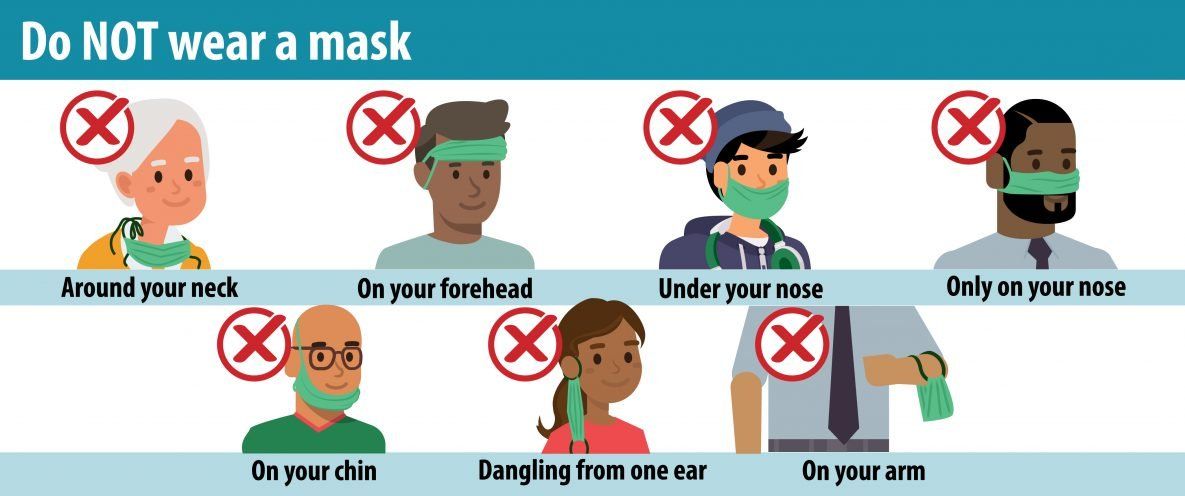Masks and Face Coverings
Face coverings are just one tool in our COVID-19 prevention toolkit.
Combined with other tools like staying home, hand washing, and physical distancing, they may help slow the spread of COVID-19.
How to Select, Wear, and Clean Your Mask
CDC recommends that you wear masks in public settings around people who don’t live in your household and when you can’t stay 6 feet away from others. Masks help stop the spread of COVID-19 to others.
- Wear masks with two or more layers to stop the spread of COVID-19
- Wear the mask over your nose and mouth and secure it under your chin
- Masks should be worn by people two years and older
- Masks should NOT be worn by children younger than two, people who have trouble breathing, or people who cannot remove the mask without assistance
- Do NOT wear masks intended for healthcare workers, for example, N95 respirators
How to Select
When selecting a mask, there are many choices. Here are some do’s and don’ts.
How to Wear
Wear a mask correctly and consistently for the best protection.
- Be sure to wash your hands before putting on a mask
- Do NOT touch the mask when wearing it
Do wear a mask that
- Covers your nose and mouth and secure it under your chin
- Fits snugly against the sides of your face
For more information, visit our How to Wear Masks web page.
How to Clean
Masks should be washed regularly. Always remove masks correctly and wash your hands after handling or touching a used mask.
- Include your mask with your regular laundry
- Use regular laundry detergent and the warmest appropriate water setting for the cloth used to make the mask
- Use the highest heat setting and leave in the dryer until completely dry
For more information, visit our How to Wash Masks web page.
For more information, see our Masks web site. For information on the sources for our mask guidance, see Recent Studies.







